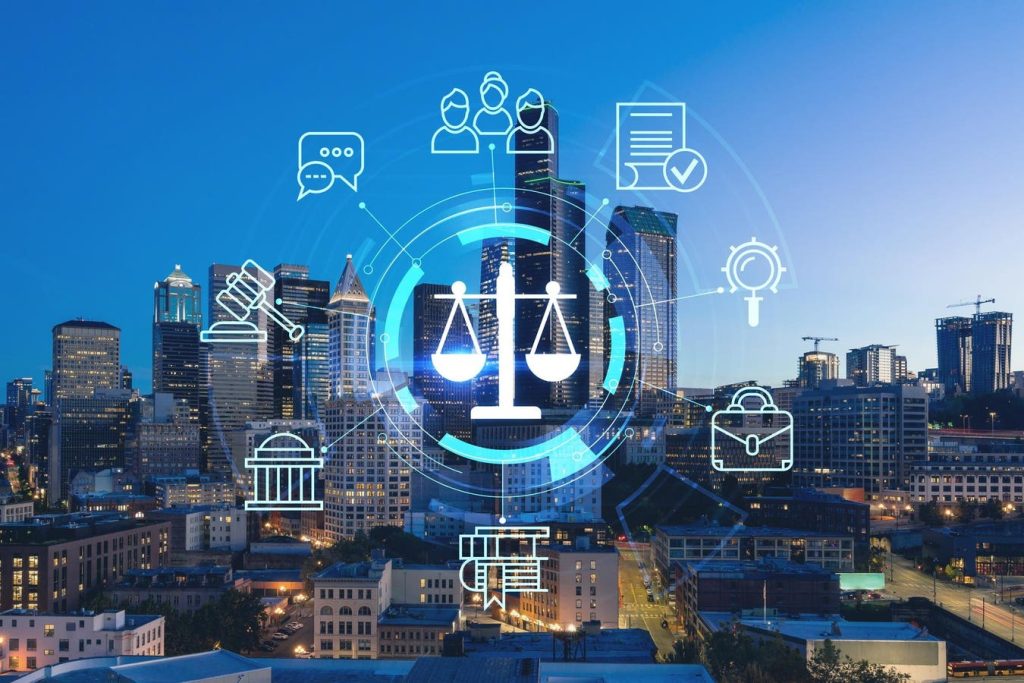Innovation is a word we typically do not associate with the American judicial system, a network of 2,000 judicial districts across the United States.
“The reality is the justice system in America hasn’t done much innovative in the last 400 years,” Jared Fishman told me in a recent interview. “We’re still using a very similar process for addressing problems. And over the last 40 and 50 years, in particular, as we’ve been sending problems like addiction and poverty and mental health into the criminal legal space, we haven’t actually changed how we do business.”
Fishman observed first-hand a broken system, one where inefficiencies created inequities. He was a senior civil rights prosecutor for the Justice Department, “where he led some of the most complex civil rights prosecutions in the country, securing convictions in high-profile cases involving police misconduct, hate crimes and human trafficking.”
Everyone – prosecutors, police, defense attorneys, and citizens — knows the system is broken, notes Fishman. The challenge is what to do about it. That experience led Fishman to found the Justice Innovation Lab, “an organization that designs data-driven solutions for a more equitable, effective, and fair justice system.”
“Part of what we do at Justice Innovation Lab,” says Fishman, “is work with decision makers inside the justice system, prosecutors, police officers, court systems to understand what is happening in their system that’s currently leading to ineffective or unjust results. And how they can make changes to policy or structures or procedures. So that they begin having better outcomes in terms of public safety and in terms of fairness in their communities.”
Applying design thinking
Fundamental to the Justice Innovation Lab is design thinking, an approach to problem identification that focuses on the root causes and finding practical solutions. For example, says Fishman, “the communication gaps between actors in the system are remarkable. Any bottleneck that exists in our justice system leads to injustice.”
As Fishman explains, “I’ve never heard of a bottleneck that exists inside the justice system where it works out better for anyone because there was a bottleneck. It means that victims don’t get access to services. It means defendants may be unnecessarily detained, it means evidence is lost that could be lost. And so all of these things have real implications for public safety, and it has real implications for the lives of the people who are impacted by cases that enter the justice system.”
Part of the inefficiency is related to the need for more data. Too many judicial districts need the information they need to understand their issues or even begin to address them. That’s where the Justice Innovation Lab enters the picture. It works with jurisdictions to teach them to mine and make sense of the data. “Number one, identify problems in their jurisdiction based on their own data, begin helping them map out their system because any solution that we develop has to work for them. I have all sorts of ideas about reform, but the reality is it has to work in each local jurisdiction.” Communication between departments is essential.
A matter of focus
Prioritization of resources is essential. The Justice Innovation Lab has worked with judicial districts that are learning to focus their often-limited resources on the crimes that inflict the most pain – murder, attempted murder, and sexual assault. This approach means easing up on traffic stops for broken taillights and the like in favor of pursuing criminals who are doing the most damage. It is easier said than done, but it is a change involving local leadership. By using data, police and prosecutors can understand the problems and prioritize resources.
Fishman’s commitment to justice was partly forged by his involvement and prosecution of the New Orleans police department. His book, Fire on Levee, tells the story of Henry Glover, whose burnt body was found in the wake of Hurricane Katrina. It turns out that Glover was killed by police who tried to cover their tracks by burning his body. More than a decade later, the offending cops were brought to justice.
The wheels of justice do grind slowly. With the help of design thinking and data mining, leaders in the judicial districts have the tools they need to effect change that benefits citizens and communities.
Note: Click here to watch my full LinkedIn Live interview with Jared Fishman.
Read the full article here










